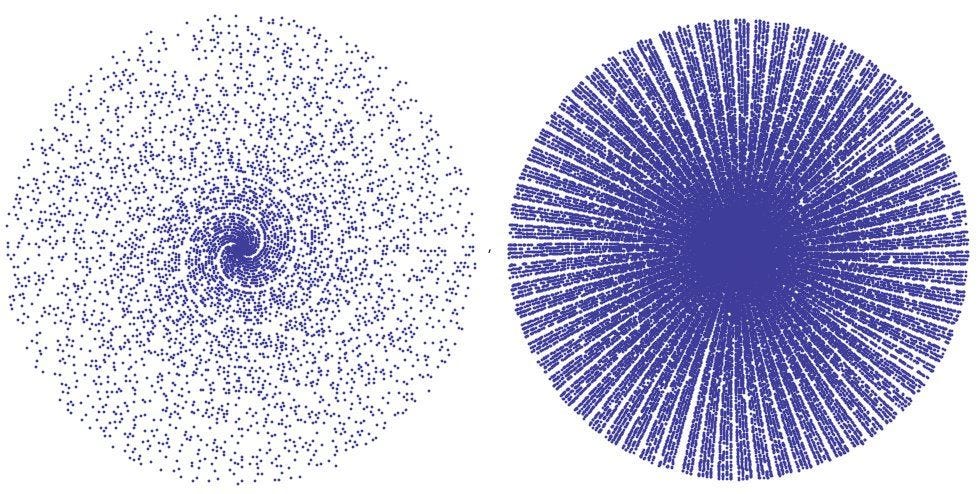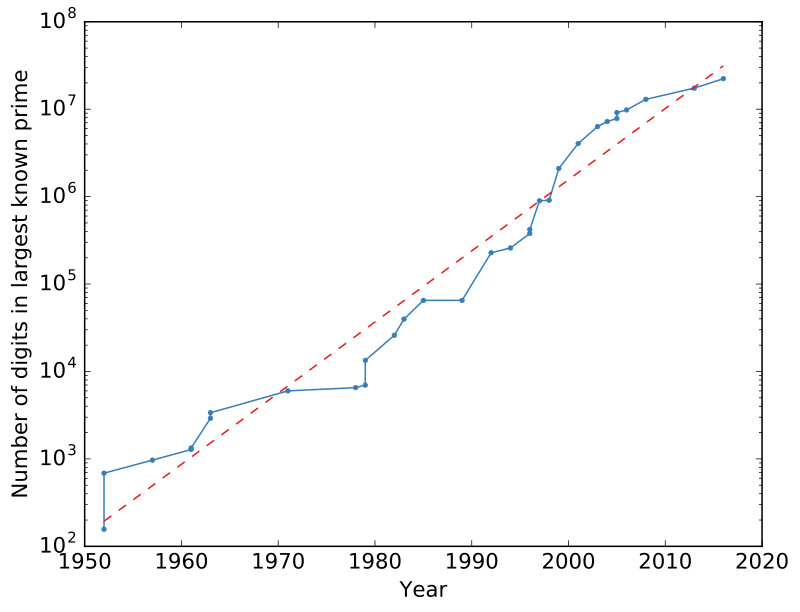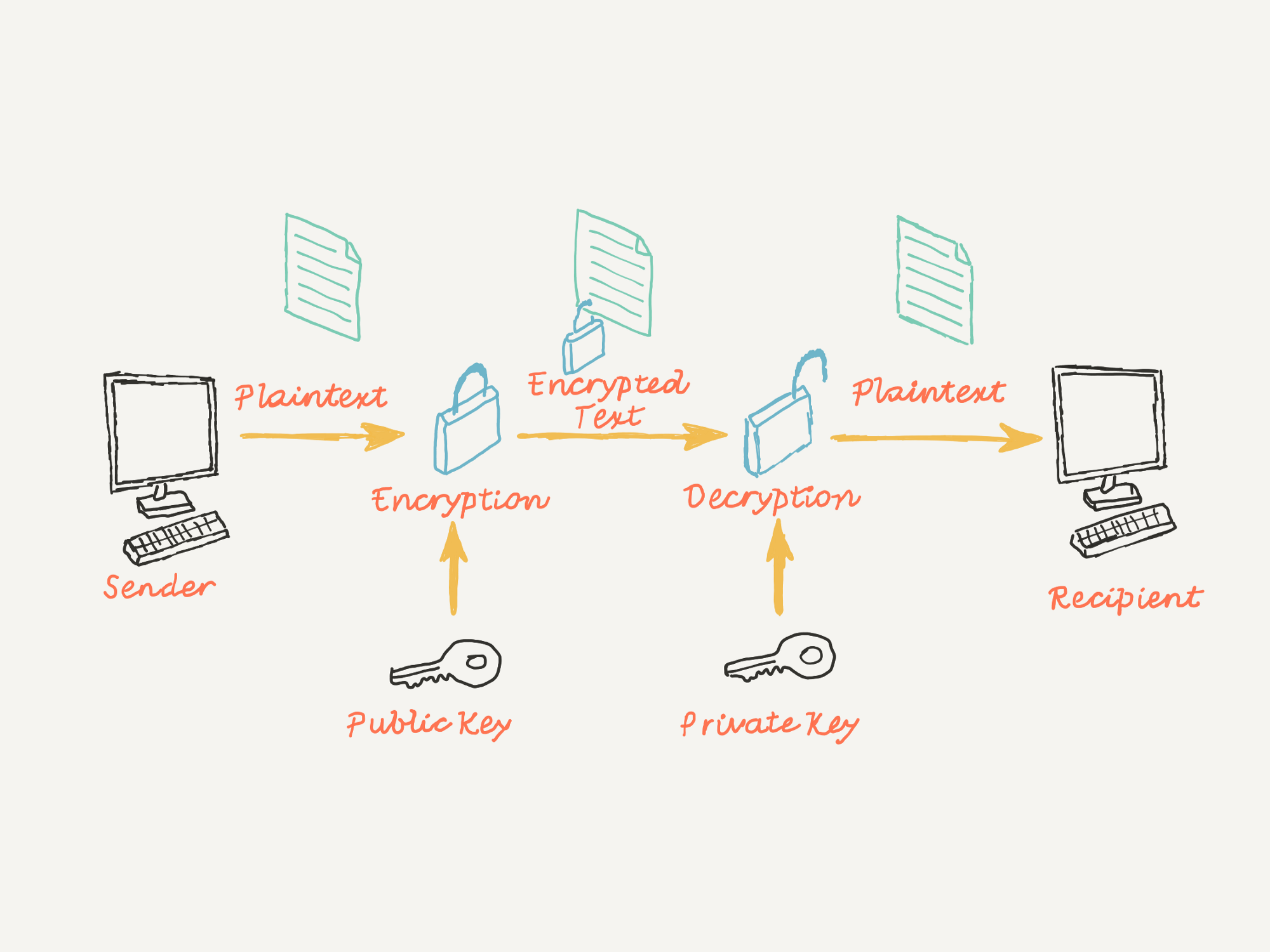My favorite number is 7 it is a prime number. Because after I finished the book, Prime Obsession, I just loved number 7. I emphasized being prime because prime numbers lie at the very heart of mathematics. But prime numbers are actually not only of purely mathematician interest. Prime numbers had been objects of fascination, for both mathematicians and artists, since Euclid. Because when you answer your phone you are using prime numbers. When you buy something on Amazon, prime numbers are protecting you from thieves. Some animals and fruits love prime numbers also. If you keep reading, you will see that a lot of algorithms develop in number theory for our nature, communication security and for transmission and compression of information. This article explores the links between prime numbers and our lives and nature. And also, the topic of prime numbers needs the attention of the largest collection of questioning younger minds. The aim of this article is to increase interest in mathematics by showing how prime numbers remarkable and amazing.
What is a prime number?
The definition of a prime is rather simple.
Definition: A prime number is a positive number that is only divisible by one and itself.
In another word, a prime number is a natural number p >1 which cannot be expressed as the product of two smaller natural numbers. Thus, a prime number has exactly two positive divisors. The first twenty-five primes:
2, 3, 5, 7, 11, 13, 17, 19, 23, 29, 31, 37, 41, 43, 47, 53, 59, 61, 67, 71, 73, 79, 83, 89 . . .
We have also a beautiful prime number, Belphegor’s Prime
1000000000000066600000000000001=10³⁰ + 666 + 10¹⁴ + 1
That’s a 1, followed by 13 zeros, followed by a 666, followed by 13 more zeros, followed by a closing 1. For most of the mathematician this prime number cannot be a coincidence. It is kind of an art!

It should be noted that 1 is NOT PRIME. But why 1 is not a prime number? Actually 1 was considered a prime number until the 20thcentury. Then mathematicians choose not to accept 1 as a prime number to be able to write a lot of theorems much easier. By the new definition of prime numbers, they stop using 1 as a prime number.
Furthermore, having no divisor is not the only reason that makes prime numbers so unique. For instance, whole number line can be produced using nothing but primes. In other words, every other number can be found by multiplying primes together. Thus, we can easily say that primes are the atoms of the number sequence and all other positive integers are built from primes. Great mathematicians have shown that: absolutely any whole number can be expressed as a product of primes, only primes, and nothing else and they called this operation the unique prime factorization theorem. This theory is coming from number theory: The Fundamental Theorem of Arithmetic. And understanding the fundamentals of arithmetic is the first key to unravel the mysteries of the primes.
Fundamental Theorem of Arithmetic (Euclid): Every integer P > 1 can be written uniquely as a product of finitely prime numbers.
Either is a prime number itself or can be represented as the product of prime numbers and that, moreover, this representation is unique, up to (except for) the order of the factors.
For example:
666 = 2 ·3 ·3 ·37 = 2 · 3² ·37
1,234,567,890 = 2 * 3 * 3 * 5 * 3607 * 3803 = 2 · 3² ·5 ·3607 ·3803
Basically, we are pulling apart any number into two numbers, then pulling those apart into two numbers if possible, and so on… When no further factoring can be done, all numbers left over are primes. We will eventually be left only with primes. The terms in the product are called prime factors. And do not forget that the same prime factor may occur more than once.
Euclid’s The Fundamental Theorem of Arithmetic is the main reason not to accept 1 as prime number. For instance, let us assume that 1 is a prime number. If we do prime factorization for 55, then we get:
55 = 11 · 5 · 1 · 1 · 1 · 1 · 1 · 1 ……· 1.
And we need to change the theorem above to: “every positive integer can be written uniquely as a product of primes, except for infinite multiplications by 1.”
Corollary: Square root of 2 is an irrational number.
Proof: Let us suppose that square root of 2 = a/b.
Then b x square root of 2 = a. Therefore b²2 = a²
Now assume that, the factor 2 on the left side of the equation above has an odd exponent, whereas it has an even exponent on the right-hand side, which contradicts to the Fundamental Theorem of Arithmetic.
There are infinitely many primes.
How many prime numbers are there on a number line? Infinite or finite? We know that, prime numbers, can only be divided by themselves and one; they cannot be evenly divided into smaller integers. So,can we take half of all possible numbers off the table right away? Yes, we can! Because of the definition, even numbers except for 2, cannot be prime. And also, we can take off all multiples of three, four, five, six, seven, eight, and so on. At this point, young mathematicians can think that “Hey, there is no prime number then.” for a minute. However, it is not true. Because Euclid proved that there are an infinite number of primesand there is no largest prime 2300 years ago.
Theorem (Euclid): There are infinitely many primes.Proof: To prove the theorem, we use method of contradiction. Let’s assume that there exists a finite number of prime numbers from p1 to pn such thatp1 < p2 < p3 < ….. < pn. Now consider the number;P=p1 x p2 x p3 x ….. x pn .P cannot be a prime number because pn is the greatest prime number. However, P is also not divisible by any prime number, pm, where 1≤ m ≤ n, therefore P has to be a prime number, which contradicts. So, we just proved Euclid’s theorem.
The theorem could seem complicated, but the basic idea of the proof is that, if there were only finitely many primes, and we could have a list of all of those prime numbers. For example, let’s say we only know 2,3,5 and 7 as a prime. But the same idea works for any finite number of primes. Now if you multiply them all together and add 1, you will get a new number,211, that isn’t divisible by any of the numbers except for 1 and itself. So, we get a new prime numberfor our list. You can do this operation infinity times and every time you will get a new prime. That’s why prime numbers are infinite. And so far, mathematicians assuming that there is no real formula which can be used to find out all the prime numbers.
The greatest known prime number so far?
What about the largest prime number? On January 2018, the largest known prime number is 2⁷⁷²³²⁹¹⁷- 1, a number with 23,249,425 digits which is one million more digits than the previous record holder, was found by the Great Internet Mersenne Prime Search, named after the 17thcentury French monk Marin Mersenne. They announced that a computer owned by Jonathan Pace in Germantown, Tennessee, discovered a new prime number.
Chris Caldwell, a professor of mathematics who runs a website on the largest prime numbers at the University of Tennessee at Martin said that: “I’m very surprised it was found this quickly; we expected it to take longer. It’s like finding dead cats on the road. You don’t expect to find two so close to one another.”

Twin Primes
When you start writing the prime numbers in an order, at beginning you will see that there is a unique behavior. There are some pairs of prime numbers that have just one number between them. We called them “Twin Primes”. If p is a prime number, then p + 2 is also a prime number and we call p and “p+2” twin primes.
The sequence of the first twin primes are:
(3, 5), (11, 13), (17, 19), (29, 31), (41, 43), (59, 61), (71, 73), (101, 103), (107, 109), (137, 139), (149, 151), (179, 181), (191, 193), (197, 199), (227, 229), (239, 241), (269, 271), (281, 283), (311, 313), (347, 349), (419, 421), (431, 433), (461, 463), (521, 523), (569, 571), (599, 601), (617, 619).
Mathematicians still wonder if twin primes continue to occur or eventually die out. If we look for twin primes starting at a billion, we already see one pair, there are some twin numbers.
(1000000007, 1000000009), (1000000409, 1000000411), (1000000931, 1000000933), (1000001447, 1000001449), (1000001789, 1000001791), (1000001801, 1000001803).
We can always find twin primes, and with this evidence we can come up with this conclusion: There are infinitely many pairs of twin primes among the infinitely many prime numbers.
Prime Conspiracy
In 2016 two mathematicians, Kannan Soundararajan and Robert Lemke Oliver, found thatprime numbers have a peculiar dislike for other would-be primes that end in the same digit. They checked the first 400 billion primes and found that primes seem to avoid being followed by another prime with the same final digit.
 Figure 3: First 4 million integers marked on their being prime or not (primes are white)
Figure 3: First 4 million integers marked on their being prime or not (primes are white)The relationship between prime numbers and encryption
Why some smart people spending their years to find a number which is not going to be divisible by any number? Why? The reason actually is so simple: To save our lives.
There are so many good mathematicians are spending their lives in order to find just a simple number. It is all about “encryption”. Prime numbers mean encryption.
Definition: Encryption is the process of converting information or data into a code, especially to prevent unauthorized access.
That fact makes primes vitally important to our lives and communications. Most modern computer cryptography works by using the prime factors of large numbers. Prime numbers also played an important part in the secret spy codes during the World War II.
Encryption just means that communication is scrambled in some way. It is based on the science of cryptography, which has been used as long as humans have wanted to keep information secret. If you watch the movie, “The Imitation Game”, you know that, during the World War II the biggest users of cryptography were governments, particularly for military purposes. And also during the Cold War between the United States and Russia in the 1960’s, the U.S. and Russia both tried to keep the other from learning defense secrets about missile and rocket developments and other military secrets.
And now, we live in the digital age, and we put more information online, like keeping our photos, messages on iCloud, or putting credit card information to Amazon, or logging into our Wells Fargo account, or sending a very important email to our professor or having a private conversation with our best friends on the phone. All these financial transactions and other sensitive details, it becomes more important to thieve and to us. We have to stop people stealing them. And that means we have to respect prime numbers and constantly try to find new prime numbers.
Okay, but how the mathematical logic behind them has resulted in vital applications in the modern world? The reason is so simple. You could do a prime factoring for a 4-digit number during a test, but what if somebody gives you a 600-digit number or 1000-digit number? Your algorithm definitely will not work at that time. Because even the most powerful and advanced ultra-super computers cannot do the prime factorization for a long time. Not seeing your love for a week could be a long time but here I am trying to say that long time is equal to the age of the universe. It may sound absurd but it is reality.
For example, no one has been able to find the two primes which divide the following 617-digit number:
25,195,908,475,657,893,494,027,183,240,048,398,571,429,282,126,204,032,027,777,137,836,043,662,020,707,595,556,264,018,525,880,784,406,918,290,641,249,515,082,189,298,559,149,176,184,502,808,489,120,072,844,992,687,392,807,287,776,735,971,418,347,270,261,896,375,014,971,824,691,165,077,613,379,859,095,700,097,330,459,748,808,428,401,797,429,100,642,458,691,817,195,118,746,121,515,172,654,632,282,216,869,987,549,182,422,433,637,259,085,141,865,462,043,576,798,423,387,184,774,447,920,739,934,236,584,823,824,281,198,163,815,010,674,810,451,660,377,306,056,201,619,676,256,133,844,143,603,833,904,414,952,634,432,190,114,657,544,454,178,424,020,924,616,515,723,350,778,707,749,817,125,772,467,962,926,386,356,373,289,912,154,831,438,167,899,885,040,445,364,023,527,381,951,378,636,564,391,212,010,397,122,822,120,720,357
Let me give you another example. Every time you send your credit card number to Amazon, you are depending on primes to keep your details secret. To encode your credit card, number your computer receives a public number like X from the website, which it uses to perform a calculation with your credit card number. This scrambles your details so that the encoded message can be sent across the internet. But to decode the message the website uses the primes which divide X to undo the calculation. Although X is public, the primes which divide X are the secret keys which unlock the secret.
 Figure 4: ENCRYPTION
Figure 4: ENCRYPTION
To put it briefly this part, prime numbers protect your money and privacy from being stolen. As you can see a prime number is absolutely essential to modern computer security.
But, not only essential to modern computer security. Prime numbers also have an amazing presence in nature and one of the amazing things about prime numbers is how its presence can be felt in nature. I assure you that, after you read next part, you will say that “Mathematics is the code that makes sense of our universe.” like some math people.
The great mathematicians: Cicadas
Everyone likes the sound of cicadas during the summer time. They come out in large enough numbers every year to enthrall people with their volume and energy of sound. However, people in Nashville do not have a chance to listen to the harmony of cicadas every year. The last time they had a chance to listen to the cicadas was 2011. After they enjoyed the concert of the cicadas, the forests would be quiet for 13 or 17 years. 13 or 17? But they are not divisible by any number except for 1 and itself. Yes, we know, they are prime numbers.
According to scientific research, the cicadas are mathematical bugs. This word can be the most interesting thing can be said for an animal. The cicadas appear periodically but only emerge after a prime number of years. They use prime numbers to come out of their burrows and lay eggs. Cicadas only leave their burrows in intervals of 7, 13 or 17 years. [17]You can think that the cicadas choosing these numbers randomly. Then you will be wrong because this choice of a 13-year cycle doesn’t seem too arbitrary. There are no cicadas with 8,10,12, 15, or 20-year life cycles. If you start looking at these cicadas through the mathematician’s eyes at this point and you will see that the pattern begins to emerge.
13 and 17 are both indivisible and this beautiful gift gives the cicadas an advantage as primes are helpful in avoiding other animals with periodic behavior. But, how? Suppose that a predator appears every four years in the forest. Then a cicada with a six-year life cycle will coincide with the predator every 12 years. Yes, because the least common multiple of 4 and 6 is 12. But if a cicada that emerges every thirteen years and has a predator with a four-year life cycle will only face a peak predator population once every fifty-two years. (4 x 13). And that gives it an enormous advantage to cicadas.
In other words, these insects use prime numbers to ensure their survival. The cryptography that keeps our lives secure when we are online and the same numbers that protect the cicadas.
[1]“Belphegor’s Prime by Dr. Cliff Pickover”Wisconsin University
[2]“Comparison between 5,000 and 50,000 prime numbers plotted in polar coordinates”. Fermat’s Library, Twitter 3 February 2018.
· [3]An Introduction to the Theory of Numbers. Hardy, G. H.; Wright, E. M. (2008) [1938]. . Oxford: Oxford University Press.
[4]”GIMPS Project Discovers Largest Known Prime Number: 277,232,917–1". Mersenne Research, Inc. 3 January 2018. Retrieved 3 January 2018.
[5]“Largest Prime number discovered– with more than 23m digits.” The Guardian. 4 January 2018
[6]“Largest known prime number” Wikipedia.
[7] “List of twin primes {p, p+2}”The on-line Encyclopedia of Integer Sequences.
[8]Alina Carmen Cojocaru and M. Ram Murty, An introduction to sieve methods and their applications, London Mathematical Society Student Texts, 66, Cambridge University Press, Cambridge, 2006
[9]“Mathematicians Discover Prime Conspiracy” Quanta Magazine, 13 March 2016.
[10] “Unexpected Biases in The Distribution of Consecutive Primes”by Robert J. Lemke Oliver and Kannan Soundararajan
[11]“First 4 million integers marked on their being prime or no” Reddit, May 2017
[12]“Functional Encryption: Definitions and Challenges” by Dan Boneh, Amit Sahai, Brent Waters.
[13]Haufler, Hervie (2014). Codebreakers’ Victory: How the Allied Cryptographers Won World War II. Open Road Media.
[14]“How Cold War code-breakers in America battled the Soviet Union” Financial Review, 28 September 2016.
[15]“The Number Mysteries A Mathematical Odyssey Through Everyday Life” Marcus du Sautoy
[16]“Periodic Cicadas are coming: Mathematical Bugs in the Prime of their Lives”by Steve Boriello, ABC News, 18 April 2016.
[17]“Periodical Cicadas”by Frank A. Hale, Harry Williams, Jamie Yanes Jr.
Written by
Math Teacher. Content Curator. Soccer player. Maradona fan. Mostly write about the lectures I love to learn better. alikayaspor@gmail.com
Responses (21)
Interesting read. :)
Couple of typos, though: 10³⁰ + 666 + 10¹⁴ + 1 should be 10³⁰ + 666 *10¹⁴ + 1
And you missed a twin prime pair involving your favorite number: (5,7)
9
2 * 3 * 5 * 7 * 11 * 13 + 1=30031
30031 is not prime. Instead, it does have prime factors greater than 13.
Please fix your proof of Euclid’s infinite number of primes
1
87
87 is not prime. 29*3 = 87.
1
It all points to GOD to me; it’s so beautiful!
666 or 6,66666666666… is not a satan type number; it is relation universal beauty rate? please open windows scintefic calculator: please click or finger Grad 400 / 6,6666666666666666666666666666666666 = sin * 2 = golden rate, surprise result.
holy bib...
Read More
So, we just proved Euclid’s theorem
Wow, Euclid! Big fan, sir!
The Belphegor prime: The formula does not match the numberr. 666 should be multiplied by the required power of 10, not added.

